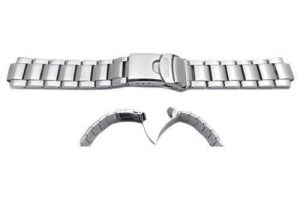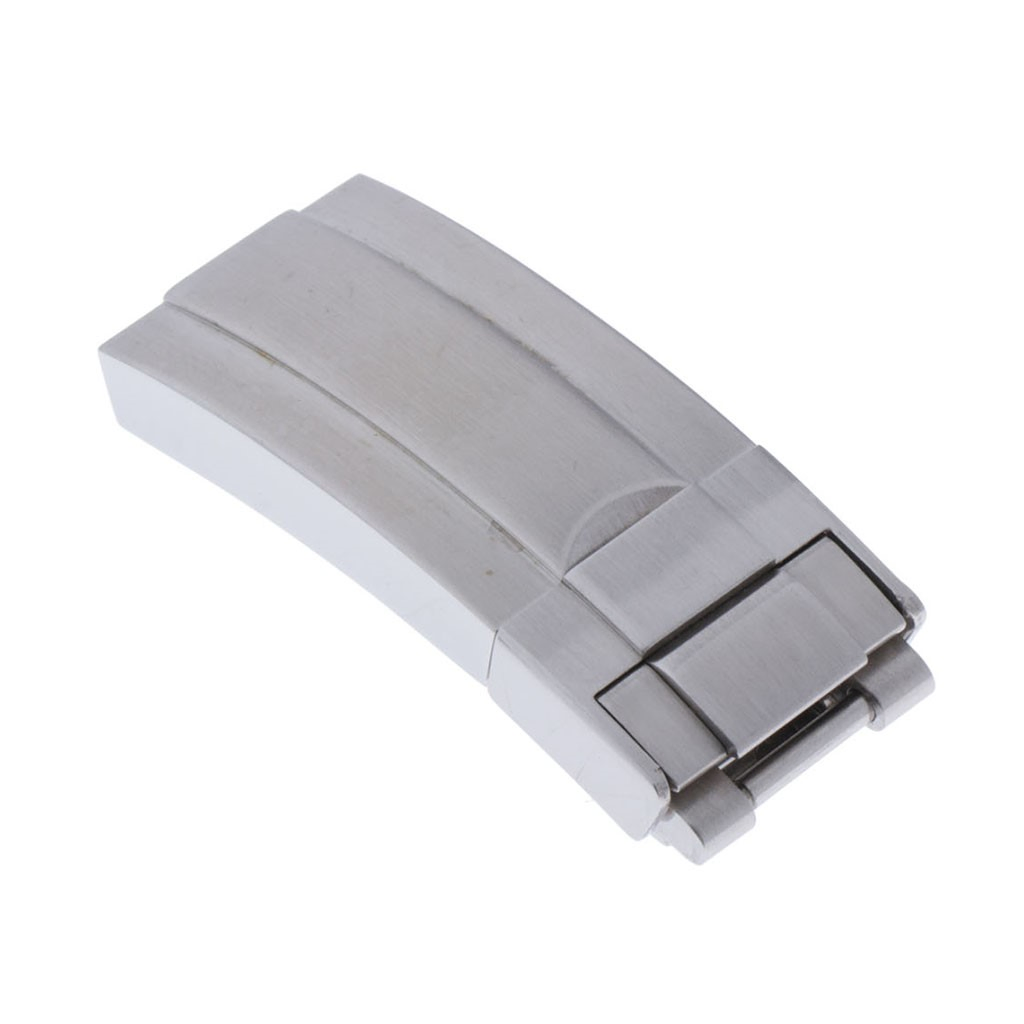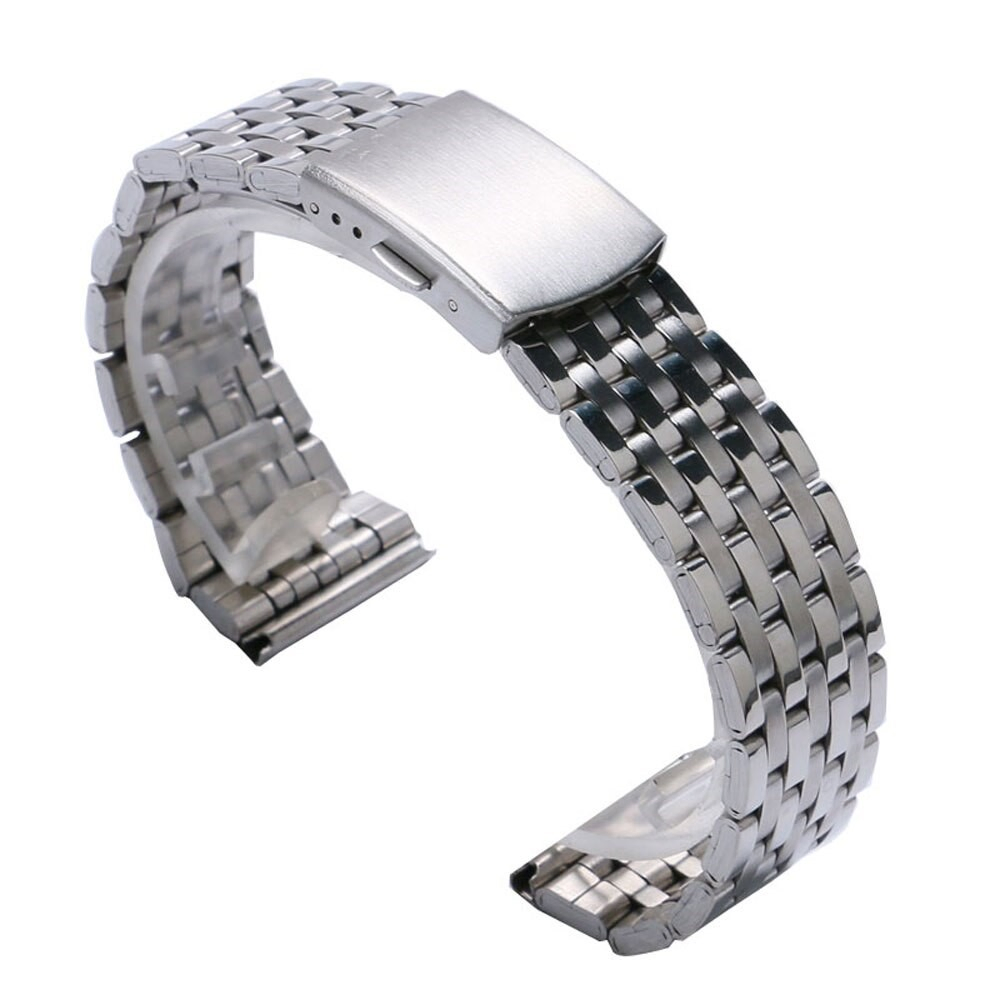One of the underrated parts of a watch is the buckle or clasp. We are so concerned about the watch movement and the materials of the case and the strap that we forget about the locking mechanism.
In today’s world of watches, there are different variants of the locking mechanism. Both the functionality of your watch and the fashion statement you make with it change drastically with each clasp variant.
If you have a full-metal wristwatch, there’s a great chance that it uses a mechanism called a fold-over clasp. A lot of leather watches also have fold-over clasps on their straps.
So, what is a fold-over clasp actually? What are the alternative options? How do you wear a fold-over clasp?
Don’t worry, I’ve got you covered! Simply keep reading to find all of your answers.
What Is a Fold-Over Clasp Buckle?

A fold-over clasp is a locking mechanism that uses two metal plates with a single hinge to fold over each other. It also uses a safety mechanism to keep the plates locked together.
So, the core components of a fold-over clasp are:
- Two metal plates
- One connecting hinge
- Safety mechanism
Now, comes the interesting (or potentially confusing) part!
A deployant clasp also follows the same mechanism and has the same core components.
So, what’s the difference between a fold-over vs. a deployant clasp?
In 1910 a French jeweler, Louise Cartier, invented the deployant clasp, which uses a folding mechanism. He named the mechanism déployant – which means to unfold or extend in French.
Later, many technicians developed and upgraded the deployant clasp. Based on the subsequent developments, you can now classify the deployant clasp into three categories –
- Single Deployant (Fold-Over)
- Double Deployant
- Tri-Fold
The single deployant clasp is the modern fold-over clasp. So, the deployant clasp is the umbrella term, whereas the fold-over clasp falls into a sub-category. Wikipedia recognizes the fold-over and the deployant clasp as the same mechanism.
Oh, another thing!
You might have heard the term “deployment clasp” in many places. It’s basically a poor misspelling of the term déployant! Sadly, many manufacturers even use the term “deployant clasp.”
More: Bulova Watches Reviews: Should You Buy One?
Classification of the Fold-Over Clasp
You can again divide the fold-over clasp into three categories:
- Fold-Over Clasp with Safety Bar
- Single Push Button Fold-Over Clasp
- Double Push Button Fold-Over Clasp

Traditionally, the older fold-over clasps didn’t have any separate safety mechanism. They used simple hooks or latches. But this design was faulty, as the hooks and latches came open with a simple jerk of the hand.
Later, a safety bar was introduced to keep the metal plates locked together.
Then, we saw the introduction of the push buttons. Here, one metal plate has a small hook and the other one has a hole. When the metal plates lock together, the hook fits into the hole with a satisfying click.
The push button is either located on one side or on both sides. Based on the number of push buttons, we classify the mechanism as either a single or double push button fold-over clasp.
Some jewelers use the friction-fit snap-shut clasp in bracelets and recognize it as a fold-over clasp. As terminologies change based on the industry, we won’t classify this as a mistake.
You also see this same locking mechanism in many entry-level watches. Manufacturers tend to use this mechanism particularly in their ladies’ watches.
In the watch community, this clasp mechanism is better known as the Jewellery Clasp. You might call it a variation of the fold-over clasp.
More: SMAEL Watch Review: Junk or Gem?
How Do You Wear A Fold-Over Clasp? A Step-by-Step Guide
I’ve seen many users select a leather watch as they think that the tang and buckle method is a simpler locking mechanism. Of course, everyone has their personal preferences, so there is technically no right or wrong choice.
However, the fold-over clasps were mainly introduced to eliminate the hassle of using a tang and a buckle!
So, wearing a fold-over clasp is much simpler. That’s why many top-tier brands use the fold-over clasps in the leather watches too.
Let me take the mystery out of the process of using this mechanism. Just follow these step-by-step instructions to open and close any fold-over clasp:
Step 1: Identify the Safety Mechanism
First, you need to find out what kind of safety mechanism the clasp uses. Try looking for buttons on either side of the clasp. There could one or two buttons based on the type.
Some models (for example, some Rolex watches) place the button on top of the clasp.
If there are no buttons on the side or on top, there should be a safety bar that you’ll have to pull up.
More: Curren Watches Reviews: A Chinese Brand with Good Quality?
Step 2: Unlock the Safety Mechanism
You need to follow any one of these methods to unlock the mechanism:
- Press the single side button or both of the side buttons to snap-off the safety bar
- Press the unlocking button on top of the clasp to snap-off the safety bar
- Pull out the safety bar with gentle pressure
Most of the fold-over clasps use one of the locking mechanisms listed above. If your watch has a different design, you should go through the user manual.
Step 3: Open the Metal Flaps and Wear the Watch
Once you unlock the safety mechanism, the two metals flaps should open up without any pressure or effort. Now, you can simply slip on your watch as it is open and able to easily pass over the girth of your palm.
Step 4: Lock the Safety Mechanism
Now that your watch is on your wrist and in place, you’ll have to lock the safety so that the clasp doesn’t open up accidentally.
If your clasp uses a push button for safety, the metal flaps will lock together automatically with a clicking sound.
For the manual safety bar variants, you’ll have to push the safety bar down after putting the flaps together.
That’s it! Isn’t it simple?
More: The Best Watch for Teens Boys and Girls [Review and Buying Guide]
Conclusion
I hope my take on the fold-over clasp has helped clear up any doubts you have about this simple and effective watch mechanism. If you are still confused about what a fold-over clasp buckle is or does, or how to open and close one, let me know in the comment section.
I am here to help you out!
For more tips and information, check out my other blog on deployant clasp.

